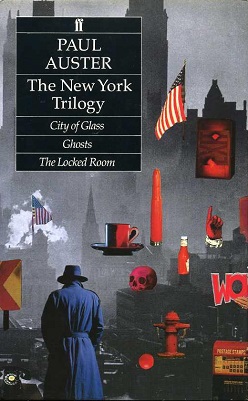City of Glass
The first story, City of Glass, features an author of detective fiction who becomes a private investigator and descends into madness as he becomes embroiled in the investigation of a case. It explores layers of identity and reality, from Paul Auster the writer of the novel to the unnamed "author" who reports the events as reality, to "Paul Auster the writer", a character in the story, to "Paul Auster the detective", who may or may not exist in the novel, to Peter Stillman the younger, to Peter Stillman the elder and, finally, to Daniel Quinn, the protagonist.
City of Glass has an intertextual relationship with Miguel de Cervantes' Don Quixote . Not only does the protagonist Daniel Quinn share his initials with the knight, but when Quinn finds "Paul Auster the writer," Auster is in the midst of writing an article about the authorship of Don Quixote. Auster calls his article an "imaginative reading," and in it he examines possible identities of Cide Hamete Benengeli, the narrator of the Quixote.
The Locked Room
The Locked Room is the story of a writer who lacks the creativity to produce fiction. Fanshawe, [2] his childhood friend, has produced creative work, and when he disappears the writer publishes his work and replaces him in his family. "Paul Auster", the name, does not appear in this story as it does in City of Glass, but Auster breaks the 4th wall by writing about writing of the previous books in the trilogy "...I could not have started this book. The same holds for the two books that come before it, City of Glass and Ghosts." [3] He also references clearly autobiographical moments such as his encounter with composer Wyschnegradsky when Auster was a young man in Paris. [4] The title is a reference to a "locked-room mystery", a popular form of early detective fiction.
